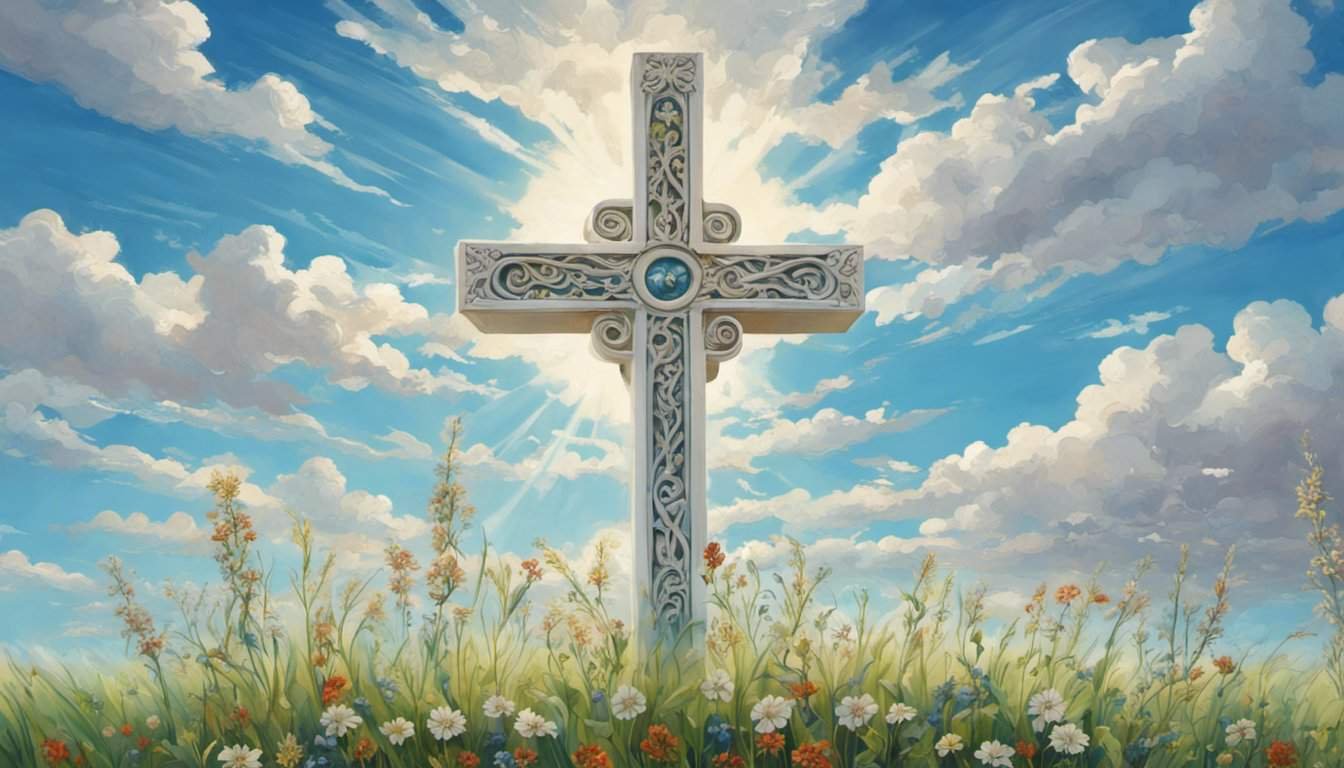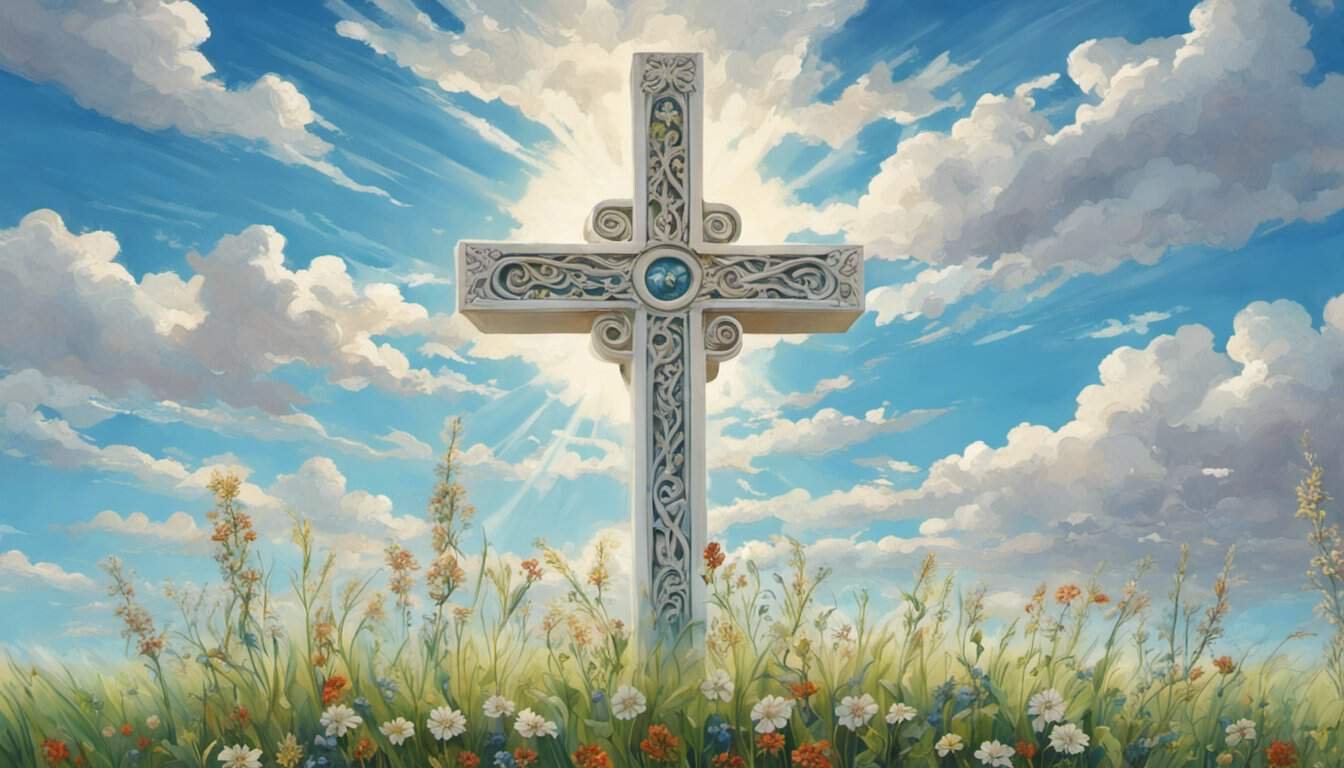False teachers posed a real danger in the early church. The Epistle of Jude speaks directly about them.
In Jude 12-16, Jude unmasks false teachers through vivid descriptions and warnings. He shows that false teachers are empty, self-serving, and headed toward certain judgment.

Jude points to their behavior, their words, and their rejection of Jesus Christ as the true Lord.


Jude uses striking pictures like hidden reefs and waterless clouds to reveal how these people promise much but provide nothing of real value. He compares them to wandering stars—unsteady, unreliable, and destined for darkness.
These images are not just poetic; they serve as warnings meant to protect the church from hidden spiritual danger. Unmasking False Teachers in Jude 12-16 explains these warnings.
Jude also draws on Old Testament history to show that God has always judged those who rebel against Him. His words echo the prophecy of Enoch, which speaks of the Lord coming to execute judgment on the ungodly.
These warnings call us to recognize the same patterns today and to stay anchored in the truth of Jesus Christ.
Overview of Jude 12-16: Exposing False Teachers
Jude’s short letter gives a direct and vivid description of people who spread false teaching within the church. He identifies their behavior and warns of their judgment.
Jude uses clear word pictures to make their danger easy to recognize.
Context of the Epistle of Jude
The Epistle of Jude is part of the New Testament. Scholars believe it was written between AD 65–80.
Jude identifies himself as the brother of James and a servant of Jesus Christ. The letter addresses believers who faced threats from people inside the community who twisted the gospel.
These false teachers used God’s grace as an excuse for immoral living. Jude’s writing shares strong similarities with 2 Peter 2, which also warns about corrupt leaders.

Both letters draw on Old Testament examples—such as Israel in the wilderness, rebellious angels, and Sodom and Gomorrah—to show that God judges those who reject His ways. Jude uses intense language and memorable images because the danger was already present.
Purpose of Jude’s Warning
Jude’s main goal is to protect the church’s faith and unity. He urges believers to “contend earnestly for the faith” because the threat came from within.
The false teachers Jude describes were not simply mistaken. They promoted sin, rejected authority, and harmed others for personal gain.
Their actions placed them under God’s judgment. By exposing their character, Jude equips his readers to recognize and resist such influence.
His warning encourages believers to guard their own conduct and hold to the truth of salvation through Christ.
Key Themes and Imagery
In Jude 12-16, Jude uses five images from nature to describe false teachers:
- Hidden reefs – dangerous but unseen obstacles that can wreck faith.
- Waterless clouds – promising refreshment but delivering nothing.
- Fruitless trees – appearing alive but spiritually dead.
- Raging waves – stirring up shame and disorder.
- Wandering stars – without direction, destined for darkness.
These images, also echoed in 2 Peter’s warnings, show the emptiness and instability of false teaching. Jude also notes their arrogance, grumbling, and flattery for personal advantage.
He makes clear that their end is destruction, reinforcing that God’s justice is certain.
Metaphors Describing False Teachers
Jude uses clear and concrete images from nature and daily life to describe the danger of corrupt spiritual leaders. These comparisons help readers recognize their hidden influence, empty promises, lack of spiritual life, and shameful behavior.
Hidden Reefs and Blemishes

Jude compares false teachers to hidden reefs—dangerous rock formations just below the water’s surface. Sailors cannot see them, yet they can tear apart a ship.
In the same way, these people quietly cause harm within the church. They are also called blemishes at the love feasts—shared meals connected with communion or the Lord’s Supper.
Instead of building unity, they bring selfishness and division. Their presence is not always obvious.
Like reefs under calm water, their true nature can remain unseen until damage is done. This makes them especially dangerous in close fellowship settings.
Key traits:
- Hidden but destructive influence
- Corruption in sacred gatherings
- Self-interest over service
Waterless Clouds and Empty Promises

Jude calls them waterless clouds—clouds that promise rain but never deliver. Farmers looking for rain would feel disappointment when such clouds pass by.
These leaders raise expectations but fail to provide spiritual nourishment. They may speak with confidence and use religious language, yet their teaching lacks truth and life.
As Redeemed Mind explains, they appear to offer refreshment but leave people dry. This image also shows instability.
Clouds without rain are moved by the wind, just as these teachers are carried by shifting ideas. They do not have the steady guidance of God’s Word.
In short:
- Appear helpful but give nothing
- Lead others into disappointment
- Lack a firm foundation in truth
Fruitless Trees and Spiritual Barrenness

Jude uses the image of fruitless trees—plants that should bear good fruit but stand empty. In farming, a tree without fruit is useless for food.
Spiritually, these teachers fail to produce godly results. Jude adds that they are “twice dead.” This may mean they are spiritually dead now and face eternal judgment later, as explained by Herald of Grace.
They may have outward signs of life, like leaves on a tree, but no real fruit. Without roots in Christ, they cannot provide nourishment to others.
Signs of spiritual barrenness:
- No lasting godly influence
- No evidence of transformed lives
- Cut off from the true source of life
Raging Waves and Foaming Shame
Jude likens them to wild waves of the sea, which stir up foam and debris. This image shows their restless, unstable, and noisy behavior.

The “foam” represents the shameful results of their actions. Just as waves throw garbage onto the shore, their lives reveal corruption and disorder.
Written Exposition notes that this is a picture of moral and spiritual pollution. They may appear bold and energetic, but their influence leaves behind confusion and defilement.
Like storms at sea, they create danger for those near them.
Characteristics:
- Unstable and restless conduct
- Visible shame in their actions
- Harmful impact on the community
Astronomical Imagery: Wandering Stars and Comets

Jude uses astronomical terms to describe the instability and danger of false teachers. These images highlight their lack of direction and their inability to guide others.
Jude also warns of their eventual judgment.
Wandering Stars as Unreliable Guides
In Jude 1:13, false teachers are called wandering stars. In the ancient world, this term often referred to planets or other celestial bodies that moved unpredictably compared to fixed stars.
Unlike the North Star, which sailors used for navigation, wandering stars could not provide a steady course. They appeared bright but offered no dependable guidance.
The Book of Enoch also uses this image. In 1 Enoch, rebellious angels are compared to stars that left their appointed paths, awaiting judgment in darkness.

Jude’s readers would have recognized this connection. This imagery warns that those who follow such teachers risk spiritual misdirection.
They may appear knowledgeable, but their teaching shifts like an object drifting in the night sky.
| Fixed Stars | Wandering Stars |
|---|---|
| Stable position | Unpredictable path |
| Reliable guide | Misleading direction |
| Useful for travel | Dangerous to follow |
Comets and the Darkness Reserved
Some scholars see Jude’s “wandering stars” as also pointing to comets. Comets blaze across the sky for a short time, attracting attention, but their paths are erratic.
In ancient thought, people often saw comets as omens of disaster. They were bright for a season, then vanished into darkness.
Jude connects this with the “blackest darkness” reserved for false teachers. The Book of Enoch describes stars bound in darkness until the day of judgment.

This parallels Jude’s warning that such figures face a fixed and unavoidable end. Like comets, false teachers may appear impressive at first.
Yet their influence is temporary, and their final destination is separation from the light forever.
For more on Jude’s use of this imagery, see the explanation of wandering stars in Jude 1:13.
Old Testament Parallels and Historical Examples

The Old Testament records real people whose choices reveal patterns of rebellion, greed, and defiance against God. Their actions serve as warnings, showing how personal motives can lead to spiritual downfall and harm to others.
Cain: The Path of Rebellion

Cain, the firstborn of Adam and Eve, is remembered for killing his brother Abel. His offering to God lacked sincerity, while Abel’s was accepted.
Instead of correcting his attitude, Cain grew angry. God warned Cain that sin was “crouching at the door,” but Cain ignored the warning.
This choice led to the first murder recorded in Scripture. Cain’s life shows how jealousy and pride can harden a person’s heart.
His rejection of God’s guidance marked the start of a path away from truth and toward isolation. Even after judgment, Cain refused to repent and lived as a restless wanderer.
Key lessons from Cain’s example:
- Ignoring God’s correction leads to greater sin.
- Bitterness can grow when left unchecked.
- Rebellion often starts with small acts of disobedience.
Balaam: Greed and Corruption
Balaam was a prophet who knew God’s power but loved wealth and status more. King Balak of Moab offered him rewards to curse Israel, and Balaam hoped for permission to take the bribe.
God allowed Balaam to go, but He sent an angel to oppose him. Even after blessing Israel, Balaam advised Moab to tempt Israel into idolatry and immorality for personal gain.
Balaam’s warning signs:
- Serving God for personal benefit.
- Compromising truth to please others.
- Using influence to lead others into sin.
Learn more about Balaam’s corrupt choices in this overview of false teachers.
Korah: Defiance Against Authority
Korah, a Levite, led a rebellion against Moses and Aaron during Israel’s wilderness journey. He claimed that all the people were holy and that Moses had no right to lead them.
His real motive was to gain power. Korah rejected God’s chosen leadership, which was an act of defiance against God Himself.
The rebellion ended when the ground opened and swallowed Korah and his followers alive. This event showed that rejecting God’s appointed order brings serious consequences.
Important takeaways from Korah’s rebellion:
- Discontent can disguise itself as a call for equality.
- Challenging God’s authority is dangerous.
- Leadership roles are assigned by God, not personal ambition.
You can read more about Jude’s reference to Korah’s defiance in this study on false teachers.
Characteristics and Behaviors of False Teachers

False teachers often reveal their true nature through their actions, words, and motives. They may appear sincere but use behavior that harms others and distorts truth.
They act to serve their own desires. Their patterns match biblical warnings and become clear with careful observation.
Ungodly Deeds and Sinful Desires
They live in ways that oppose God’s standards. Jude describes them as ungodly, meaning their actions lack reverence for God and His commands.
These individuals often follow sinful desires. They put personal pleasure above obedience, including greed, lust, or the pursuit of influence.
Their choices show self-interest instead of service to others. The Bible says they may twist God’s grace into a license for immorality, as seen in Jude 1:4.
Such behavior is not a single mistake but a repeated pattern.
| Trait | Example Behavior |
|---|---|
| Disregard for God’s Word | Ignoring clear commands |
| Pursuit of pleasure | Choosing sin over righteousness |
| Corruption of truth | Justifying wrong actions |
Their ungodly deeds influence others, leading them toward the same harmful path.
Grumblers, Complainers, and Boastful Attitudes
False teachers often act as grumblers and complainers. They speak against leadership and stir discontent.
They focus on what they do not have and show a boastful spirit, praising themselves instead of God. According to Jude 16, they flatter others for personal gain.
This negativity and self-promotion damage unity in a church. It shifts attention away from truth and toward personal agendas.
Common speech patterns include:
- Criticizing without offering solutions
- Talking about their own achievements
- Using flattery to gain influence
Their words reveal the pride and self-interest that guide their actions.
Selfishness at Love Feasts
In the early church, love feasts were shared meals meant to build fellowship. False teachers used these gatherings for selfish purposes.
Jude 12 calls them “hidden reefs” at such meals, meaning they were dangerous but not always visible. They looked like part of the group but acted only for themselves.
Instead of serving others, they fed themselves first. They showed no concern for the needs of the poor or hungry.
This self-centeredness betrayed the purpose of the event. Descriptions in Jude compare them to waterless clouds and fruitless trees—present but offering nothing of value.
Their presence at love feasts revealed a lack of genuine love and commitment to the community.
Consequences of False Teaching

False teaching causes real harm. It damages faith, distorts the message of the gospel, and brings serious accountability before God.
Those who spread a false gospel face both present spiritual loss and future judgment.
Spiritual Shipwreck and Judgment
Jude 12-13 describes false teachers as waterless clouds, fruitless trees, and raging waves. These images show spiritual emptiness and instability.
When people follow a false gospel, their faith can suffer a spiritual shipwreck. They drift from the truth and lose confidence in God’s promises.
They become vulnerable to deception. God’s Word warns that judgment is certain.
Just as Jude compares them to wandering stars destined for darkness, their path leads to separation from God’s light. This judgment is not only future—it begins when they reject the Holy Spirit’s guidance.
False teachers harm others as well as themselves. They mislead those seeking truth, causing confusion and division within the church.
This makes discernment and testing all teachings by Scripture essential.
Separation from Salvation and Sanctification
A false gospel changes the foundation of faith. It replaces grace through Christ with human effort, distorted promises, or moral compromise.
When someone accepts such teaching, they step away from the path of salvation. They also block the ongoing work of sanctification, which is the process of becoming more like Christ through the Holy Spirit.
Jude calls them twice dead: dead in sin and dead in fruitfulness. Without true faith in Jesus, there is no spiritual life to grow or mature.
This separation affects daily living. Without sanctification, a believer’s character does not reflect Christ. Their witness to others becomes weak or harmful.
The damage can be long-term unless they turn back to the truth.
Ultimate Condemnation
Scripture is clear that persistent rejection of God’s truth leads to eternal consequences. Jude points to examples like Cain, Balaam, and Korah—people who opposed God and faced His judgment.
False teachers who refuse to repent will face ultimate condemnation. This is the final and complete separation from God’s presence.
This fate is not limited to ancient times. Jude’s warning applies to anyone who spreads or clings to a false gospel today.
The danger is real because it affects where a person will spend eternity.
Prophecy and Judgment: Enoch’s Warning

Jude draws from an ancient prophecy to describe God’s certain judgment on those who reject His ways. This prophecy names specific behaviors and attitudes that bring condemnation.
It shows that God’s justice is not random but based on clear moral grounds.
The Prophecy of Enoch
Jude 14–15 quotes Enoch, identified as the seventh from Adam, referencing a prophecy preserved in the Book of Enoch (also known as 1 Enoch). This text describes the Lord coming with “thousands of holy ones” to judge all people.
The prophecy focuses on convicting the ungodly for their actions, words, and attitudes. It highlights that judgment will address both deeds and the harsh things spoken against God.
In early Jewish tradition, 1 Enoch was widely known and respected, even though it is not part of the Hebrew Bible. Jude uses it to reinforce his warning, showing that the expectation of divine judgment has deep historical roots.
The message is direct: God’s arrival will not be symbolic—it will involve real accountability for every ungodly act.
You can read more about Enoch’s prophecy in Jude 14–16.
Application to False Teachers
Jude applies Enoch’s words to false teachers who had infiltrated the church. He describes them as arrogant and self-serving.
They dismiss God’s authority. These traits echo the “ungodly” people Enoch warned about.
They actively harm others through deception and greed. Their speech often includes grumbling and boasting.
They use flattery for personal gain. By linking them to Enoch’s prophecy, Jude shows that such people face the same judgment described for the ungodly in ancient times.
For a deeper breakdown of how Jude ties Enoch’s prophecy to these individuals, see this study on unmasking false teachers.












